From remote locations to competition for both passengers and pilots, US regional airports are up against it. Tom Batchelor hears how they are fighting back.
The acute pilot shortage facing American regional airlines, which account for around four in ten scheduled departures, has raised concerns over the fate of regional airports across the US. They perform a vital social and economic role in connecting rural and smaller communities, but face a number of specific challenges, not least their often remote locations and lack of surrounding infrastructure. The COVID-19 downturn and subsequent recovery has highlighted the delicate balance they maintain within the broader aviation ecosystem, being both vital as a feeder for larger hubs and carriers, as well as uniquely vulnerable to fluctuating traffic patterns.
For around two-thirds of US airports, regional airlines provide the only source of scheduled air service. But between 2019 and 2022, 161 US airports lost more than one in four of their commercial flights. The Regional Airline Association (RAA) warns that when larger aircraft with more seats are used, as is increasingly the case, all but the very largest airports lose both destination options and frequency – and many airports cannot support larger aircraft services at all. The organisation claims smaller airports are hit hardest – when comparing October 2019 with October 2022, on average 25 large hub airports lost flights by 16%, while 54 ‘non-primary’ airports lost flights by 44%.
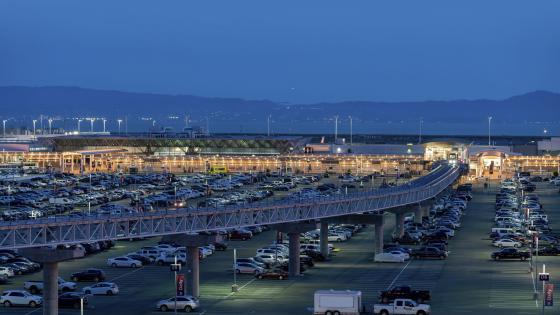
More than 360,000 passengers were expected to pass through Oakland during 2023’s 11-day Thanksgiving holiday travel period
A precarious existence
Demonstrating the fragility of local air services, Northern Colorado Regional Airport (FNL), 50 miles north of Denver, is the busiest airport in the state without an Air Traffic Control (ATC) tower. The area that the airport serves has more than doubled in population since 1990, creating a need for an ATC solution. Searidge Technologies has been working on a Remote Tower System (RTS) for the airport, which would have been one of the first in the world to integrate both video- and track-based surveillance radar to provide a comprehensive view of the airport surface and Class D airspace to air traffic controllers working in a remote facility. The track-based surveillance enables controllers to have awareness of aircraft close to the airport, and integration with the radar data ensures that flight data labels correlate with the aircraft on the video display.
However, after eight years of attempting to implement the technology, Searidge Technologies announced in October 2023 it was withdrawing from the project owing to reported “ongoing challenges with the FAA’s certification of remote towers.” Colorado state authorities, the airport and the FAA have said they will "collaborate on a new path forward that preserves existing air traffic control services at FNL for the foreseeable future. During this time, future options will be evaluated for continued development of the remote tower facility at FNL, as well as potential options for a traditional air traffic control tower.”
The announcement followed a decision by low-cost carrier Avelo to suspend services from FNL to Las Vegas and Burbank, California, in 2022. The episode highlights the struggle that regional airports have in securing the support and investment necessary for growth.
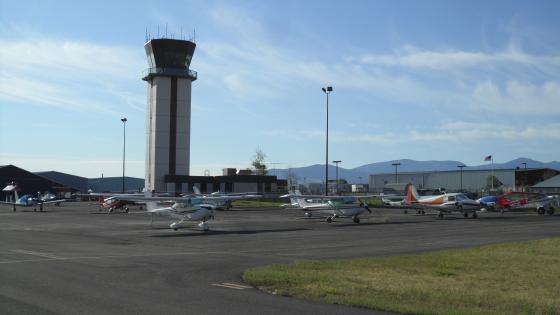
A high-school robotics team helped streamline the work of the Montana airport's security department
Meeting evolving needs
For other airports, it is their location close to a large international hub that presents a different set of challenges. “Our biggest issue is people not knowing where Oakland is, and where it sits in the region,” said Craig Simon, acting director of aviation at Oakland International Airport (OAK), which operates in the shadow of nearby major hubs at San Francisco (SFO) and San Jose (SJC). Speaking to Airports International, he said: “People really don't understand where Oakland sits in the Bay Area, and how close it really is to downtown San Francisco.”
Oakland and many other secondary and regional airports across the United States are working hard to ensure their operations are fit for the 21st Century. OAK recently completed its Terminal 2 Security Exit Project, designed to prevent the backflow of passengers from non-secure areas. Travellers leaving OAK’s T2 now pass through motion sensors and two sets of automatic doors in order to enter the public baggage claim area.
Adoption of new technology is a key component in Oakland’s tool kit. “We’re looking to really utilise technology as much as we possibly can when it comes to passenger movements, aircraft movements and being able to keep an eye on what's happening around the airport,” Simon said. “We have a number of requests for proposals for software, tracking both aircraft and vehicles on and around the tarmac and on the airfield. We're also doing something very similar inside the terminal to give us heat maps so we can understand the flow of passenger traffic, what concessions they're hitting and when the checkpoints are busy.”
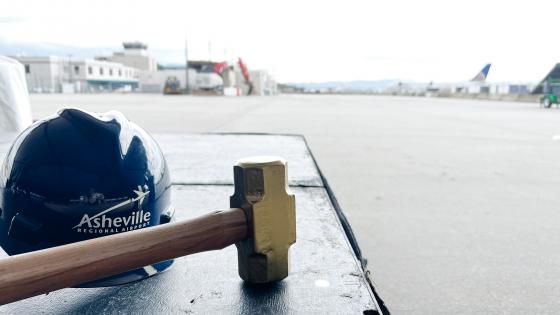
Asheville has broken ground on AVL Forward, an infrastructure project to build a new airport terminal
Technological advancements
Regional US airports, which can be more agile in the face of fluctuating demand and fragile air services, are staying competitive by investing in new technology. This has multiple benefits, from enhancing security to improving the passenger experience and ensuring delays are minimised. Hagerstown Regional Airport in Maryland, for example, has two new technology units to enhance screening of travellers and their belongings, comprising a credential authentication technology (CAT) unit and a computed tomography scanner. “Previously, our screening technology for carry-on bags used 2-D images,” said Christopher Murgia, the Transportation Security Administration’s federal security director for the state. “The CT technology applies advanced algorithms for the detection of explosives, including liquid explosives and other threat items.”
At Montana’s Helena Regional Airport (HLN), a high-school robotics team was brought in to help streamline the work of the airport's security department. By using computer-aided design and 3D printing, the team created a new organisational caddy for colourimetric testing kits used by the airport's security workers. HLN is in the process of patenting this first-of-its-kind caddy, with a growing list of airports keen to secure caddies for their own employees. Elsewhere, Augusta Regional Airport in Georgia has installed an electric aircraft charging station in partnership with BETA Technologies to support the shift to non-fossil fuels in the near future.
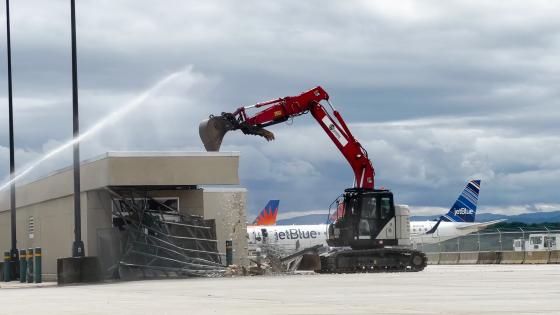
The AVL Forward project will give Asheville Regional Airport five additional gates
A dearth of pilots
One industry-wide issue that is particularly acute within the regional sector is the ongoing pilot shortage, which is affecting smaller airports' ability to compete for new services.
With the resurgence of the travel sector after the coronavirus pandemic, there has been an uptick in demand for pilots among both regional and mainline carriers. As larger, international airlines have ramped up operations, pilots have been poached from regional and smaller carriers. Andrew Pierini, executive vice president and chief commercial officer at Tulsa International Airport (TUL), told Airports International: “We’re really up against some of the constraints that carriers in the US are seeing in terms of aircraft shortages and pilot shortages – that is a huge one for us. As a result, airlines are not able to utilise aircraft as frequently as they would like. When we're competing against other regional airports, it's a more heightened environment now for air service, because you are competing for fewer available assets from the airlines. That can be tricky. Coming out of the pandemic, the airlines would like to be building up more quickly than they are able.”
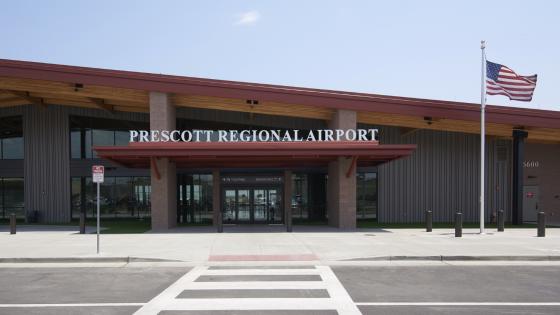
Arizona’s Prescott Regional Airport is to begin the transition to unleaded fuel
Ongoing infrastructure investment
Despite the reduction in air services hampering growth at many regional airports, investment in infrastructure continues at sites nationwide. A report from the Airports Council International – North America estimates that US airports will need $151bn over the next five years to fund infrastructure projects, up more than 30% from just two years ago.
Some of that money is trickling through. At St Mary's County Regional Airport in Maryland, also known as Captain Walter Francis Duke Regional Airport, has been awarded $241,949 in federal funding to extend its runway. At Manchester-Boston Regional Airport, a runway reconstruction project was completed over the summer. North Carolina’s Asheville Regional Airport (AVL), which surpassed 200,000 monthly passengers in July for the first time in its history, has broken ground on AVL Forward, an infrastructure project to build a new airport terminal, growing capacity to 12 gates from the existing seven. And at Houston Hobby Airport, which has 83 destinations serviced by five passenger airlines (Allegiant, American, Delta, Frontier and Southwest), $470m is to be spent on expanding the West Concourse.

A $470m investment will expand the West Concourse at Houston Hobby Airport
Diversification is key
In the face of airline cutbacks and capacity constraints, regional airports are looking for new funding channels to diversify revenue streams. TUL introduced visitor passes to give friends and relatives of passengers access to the airside areas of the airport. “It's a nice amenity, but it also enables them to spend money within the terminal,” said Andrew Pierini. The practice of allowing non-ticket holders to go through security ended after the terrorist attacks on 9/11, but it is gaining currency with a growing number of smaller airports. Others have looked at or have implemented similar programmes, including New York’s LaGuardia Airport, Ontario International Airport in California and Lafayette Regional Airport in Louisiana.
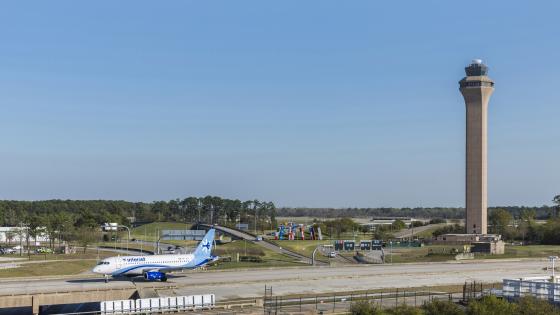
Located seven miles from downtown Houston in Texas, William P Hobby is the city’s oldest commercial airport
Connecticut’s Tweed-New Haven Airport (HVN) is another interesting case study in how smaller US gateways can grow with the right support from industry and government. In August 2022, the Tweed-New Haven Airport Authority Board of Directors and Avports, which has been managing HVN since 1998, finalised a new lease and management agreement under a public-private partnership framework. This includes the construction of a new terminal on the east side of the airport, a runway extension, infrastructure improvements and community investments for noise, traffic and environmental mitigation. “The result is a fascinating story of air traffic growth at regional airports – going from zero traffic to more than 14 destinations in its first year of operation at HVN,” said Avports CEO Jorge Roberts and chief operating officer Arturo Garcia-Alonso in an op-ed for Airports Council International. Under the new 43-year public-partnership agreement – a first-of-its-kind hybrid partnership – Avports assumed responsibility for all of HVN’s operating expenses and any ongoing deficits, eliminating all local subsidies. At the conclusion of the lease, the assets will revert to the full control and ownership of the Tweed New Haven Airport Authority.

A BETA electric aircraft charging station in operation
Keeping it green
The carbon footprint of regional airports may be dwarfed by larger international hubs, but that doesn’t mean they’re shying away from action to lower their greenhouse gas emissions. The FAA recently pledged $92m for 21 airports to acquire solar panels, electric buses and charging stations, as well as fund electrification studies. While the largest sums are going to the major US airports, regional airports are also benefiting. Some $600,000 is being spent on Southeast Iowa Regional Airport in Burlington to install solar panels, while $2m is being handed to McGhee Tyson Airport in Tennessee to purchase zero emissions vehicles and charging stations, and Prescott Regional Airport in Arizona is to receive $243,000to transition to unleaded fuel.
Andrew Pierini said the team at Tulsa International Airport was looking at the installation of green infrastructure, as well as making preparations for advanced aerial mobility (AAM) networks that will require clean energy networks and electric charging points. He explained: “We're starting to explore more on the GSE side if we can convert our airport vehicles to electric – that's a big initiative for us. We're also looking into how we prepare ourselves for electric vertical take-off and landing (eVTOL) aircraft. We've talked to several [eVTOL] companies about potentially relocating to Tulsa.”

Regional airports stand to benefit from the predicted boom in advanced air mobility and vertiports
The impact of AAM
Regional airports are likely to benefit from the introduction of AAM across the US. Quieter airspace, lower operating costs and proximity to communities without extensive existing air services puts them at an advantage in terms of automated electric aircraft.
Some regional airports are already reaping the rewards of this endeavour. Boeing-backed AAM company Wisk recently carried out flight demonstrations from Long Beach Airport in California to show how autonomous flight operations can be completed safely within a complex, real-world commercial airport environment. Elsewhere, AAM developer VPorts is creating the first international electric AAM corridor between Syracuse Hancock International Airport in New York and a VPorts vertiport in Mirabel, Québec. The corridor will foster the establishment of an AAM ecosystem that will provide a platform for full commercial cargo transport operations using eVTOL aircraft. This new era of aviation could provide many opportunities for regional airports to flourish.
